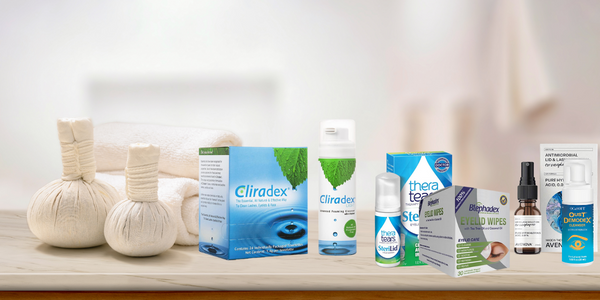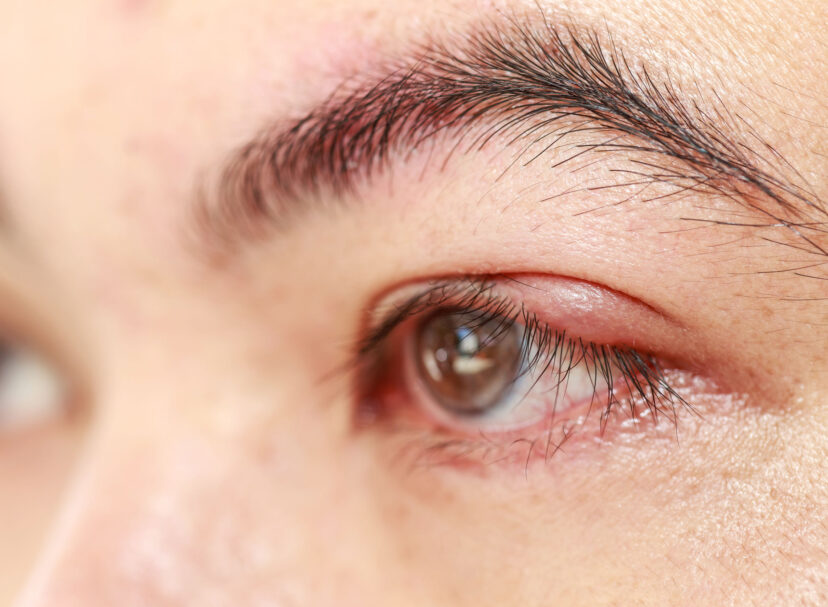Don’t believe anyone if they tell you that a good cry isn’t therapeutic! Even little ones can make you feel better. And that’s just emotionally. The truth is that our body produces and uses tears to its benefit even when there is no pain or joy associated.
The Three Types of Tears

Smithsonian Magazine published an article about the work of artist Rose-Lynn Fisher who took photos of dried tears at a microscopic level. That work is beautiful and illustrative of the differences between the types of tears we produce:
Scientifically, tears are divided into three different types, based on the stimulus. Tears of grief and joy are psychic tears, triggered by extreme emotions, whether positive or negative. Basal tears are released continuously in tiny quantities (on average, 0.75 to 1.1 grams over a 24-hour period) to keep the cornea lubricated. Reflex tears are secreted in response to an irritant, like dust, onion vapors or tear gas.
All tears contain a variety of biological substances (including oils, antibodies and enzymes) suspended in salt water, but as Fisher saw, tears from each of the different categories include distinct molecules as well. Emotional tears, for instance, have been found to contain protein-based hormones including the neurotransmitter leucine enkephalin, a natural painkiller that is released when the body is under stress.
All tears have different layers to them. Historically science presumed that this was three.
- An inner mucus layer that keeps the whole tear fastened to the eye.
- A watery middle layer (the thickest layer) to keep the eye hydrated, repel bacteria and protect the cornea.
- An outer oily layer to keep the surface of the tear smooth for the eye to see through, and to prevent the other layers from evaporating.
Recently, however, more and more people in the eye care business point to tears as having two:
- A Mucoaqueous layer which has 4 mucins and over 1500 proteins.
- A Lipid layer which contains the oils.
Together those layers make up the tear film, which provides the following functions:
- Optical clarity and the ability to refract light
- Keeping the ocular surface comfortable and lubricated
- Protection from the environment and infections due to the antibacterial proteins and antibodies they carry and the ability for reflex tears to flush away particles
- Maintaining a trophic environment for the cornea, which includes maintaining electrolytes and appropriate pH level, as well as proteins that help wound healing
While all three types of tears are released through your eyes, the basal and reflex tears serve more purpose in keeping those organs healthy and functional. All tears are produced in the lacrimal glands.

Lacrimal glands are at the tops of your eyes. Tears move from them into puncta, the tiny holes that are in the corners of your eyelids. You can see those puncta in the mirror if you look closely. The tears either evaporate or are reabsorbed into your body, except in the event of a significant amount of emotional tears or extreme irritation. In that case, the tears produced are too much for your body’s normal drainage system, which includes canals and ducts that lead into your nose. When that occurs the tears spill out of your eyes and sometimes out of your nose.
Basal Tears
Basal tears are constantly present in a healthy eye and are helping to keep the eye itself lubricated and nourished. Every time you blink you are spreading the basal tears across your eyes. When the basal tear functions do not work well you can develop a condition variously called Dry Eye, dry eye syndrome, dry eye disease, or dysfunctional tear syndrome (DTS).
Reflex Tears
Reflex tears are deployed by the body to wash irritants out of your eyes. Irritants can be gases, vapors, or particulates. They also occur when your eye is poked by a foreign body. They are released in larger quantities than basal tears and they usually contain more antibodies and antibacterial agents than basal tears do.
When You Lose Your Tears

Because tears serve such a valuable function, it is bad for eye health when we lose the ability to produce the quality and quantity needed to protect our eyes. Doing so can cause the eye’s surface to become altered and damaged. This may mean that the lubrication is compromised because of poor tear viscosity and that the cornea loses its integrity, leading potentially to serious issues including vision loss. The change in tear composition can be triggered by a number of factors that include:
- Age
- Menopause
- Allergies
- Environmental Stressors
- Eye surgeries
- Medication
- Immune disorders
- Intense Amounts of Digital Device Screen Time
- Blepharitis
The discomfort associated with losing tear function can be treated with artificial tears for temporary relief. Cliradex can also be very helpful in managing the problem in the event that it is caused by anterior blepharitis triggered by demodex mites. If you find yourself with discomfort due to dry eye, talk to your eye care professional, as they can diagnose the exact cause and help you recover.





